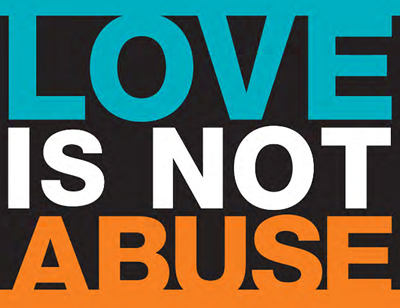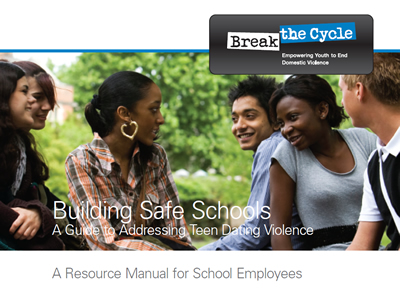When we faced what happened to Maggie, we knew that more had to be taught to young people about healthy relationships and dating abuse while they were in schools. We knew that schools had full academic agendas, even more so now, and teaching actively about healthy relationships does not get enough time in the school day.
During 2013 and 2014, we worked with staff and administrators at Plainwell High School (PHS), Maggie’s alma mater (1998), on a committee of 10 members to talk about teen dating violence and PHS’s role in dealing with it in the school setting. We used information from Break The Cycle, Love Is Not Abuse and Love Is Respect to start our committee discussions.
Plainwell High School TDV Committee: 2013-14 School Year Framework for Action
ELEMENTS OF SCHOOL SUCCESS IN DATING VIOLENCE PREVENTION: Patterns and Challenges
1) PREVENTION PROGRAMS
- Curriculum-based
- Developmentally appropriate middle and high school programs
- Saturate the schools across grade levels
- Can work into existing health education or relationship building work
- Use or adapt evidence-based programs
- Logistical challenges: time, scheduling, community perceptions
Article: The Need for School-Based Teen Dating Violence Prevention
2) STAFF EDUCATION
- Invested staff can change school climate
- Link dating abuse to academic success and school safety
- Must be prepared for disclosures of abuse – protocol for action with training
- Provide simple resources for them to keep on hand – identify local resources for them
- Address concerns of mandatory reporting and confidentiality – MI requirements
- Understand state and local DV laws – Minors and consent process
- Logistical challenges: staff time, administrative commitment, clarity of policy requirements both district and community
3) SCHOOL POLICY
- Opportunity for awareness-building and public education – board level possibility
- Policies need to be enforceable and provide consistency and efficiency of response for each incident encountered
- institute procedures to limit re-traumatizing youth who report incidents of DV
- Policy change process can mobilize communities and legislators on your behalf
- Logistical challenges: political environment, time and patience, lack of invested stakeholders, existing related policies (ie. Already have bullying policy, why need more?)
EXAMPLES
4) INVOLVED PARENTS
- Listen to how parents understand and talk about dating abuse in their community
- Understand cultural and community needs, as well as where and when parents gather
- Address parental concerns
- Include them in relationship building as powerful stakeholders
- Logistical challenges: free time, investment in the issue, personal vs. community understanding of dating abuse
5) YOUTH ACTIVISM
- Engage youth to directly lead social change – Gives value to their ideas
- Create leaders and activists while also teaching about healthy relationships
- Youth more likely to listen to peers than adults
- Mentorship and service-learning can reinforce prevention lessons
- Logistical challenges: student time and supervision, sustainability with student turnover
RESULT : What an Action Plan based on the Framework above looked like for our committee
IDEAS FOR EACH ELEMENT FOR SCHOOL SUCCESS
PREVENTION PROGRAMS
Consider for use in HS Health Class curriculum
STAFF EDUCATION
- Provide staff training and information from an attorney on minors, DV and the law.
- Local police visit school to discuss patterns of DV in community with specific staff.
- Plan decided on was to present short, frequent trainings during monthly staff meetings
SCHOOL POLICY
- Survey students about dating violence and their experiences with it. Find valid and reliable tools.
Action Taken:
- Survey was constructed by Center For Women in Transition Prevention Coordinator and administered to sophomores. Results discussed at subsequent team meeting
- Dating abuse section and language added to High School Student Handbook
INVOLVED PARENTS
- Parent Club involvement
- Community input
Action Taken:
- It’s Time To Talk Day event held for parents in February 4, 2014
YOUTH ACTIVISM
- Students included on committee
- Start training students as advocates in MS, experienced by HS years
- Recruit college age student advocates to mentor PHS student advocates
- National Teen DV month in Feb. 2014
Action taken
- PHS PALS #Orange4Love Day during Respect Week February 2015 (by PHS PALS group, led by school counselor)
FACTORS IN DATING ABUSE
All genders can be perpetrators or victims of abuse.
- Dating violence occurs in all neighborhoods, income levels, and ethnic groups -equal opportunity violence.
- Dating violence happens in straight and same-sex relationship.
- Most abuse gets more severe over time.
- Abuse against females tends to be more severe and injurious.
- Exposure to DV can affect a student’s school success and attendance.
- In the secondary school setting, student behaviors dealt with by staff can often be related to dating relationship situations.
DEFINING THE PROBLEM
- 1 in 3 teens experience some kind of abuse in their romantic relationships.
- 1 in 10 teens experience physical abuse in dating relationships.
- Nearly 80% of young women who have been physically abused in their intimate relationships continue to date their abuser.
- 1 in 4 teens in a relationship say they have been called names, harassed, or put down by their partner through cell phones & texting.
- Only 33% of students report abuse to anyone else.
- When females are asked if they would tell anyone if they were abused, 86% said they would only tell a friend/peer.
- Girls between the ages of 16-24 experience the highest rates of intimate partner violence for any age group of females over a lifetime.
- Patterns of dating violence behavior, both victim/target and abuser, often start early and carry into adult relationships.
WHAT’S HAPPENING IN SCHOOLS
- Over 80% of school counselors report not having a protocol in schools to respond to incidents of abuse. http://pediatrics.aappublications.org/content/130/2/202.full.pdf
- Over 90% reported that no training has been provided to teachers or staff
- Over 80% reported that their schools did not conduct periodic surveys around dating abuse behaviors.
A West Michigan example of what type of survey can be used to help schools : https://www.miottawa.org/Health/OCHD/pdf/data/OCYAS_2011.pdf
PROMISING TRENDS IN SCHOOLS
- More peer-led advocacy based learning with active student participation
- Youth-led advocacy or awareness-raising projects, such as pledge days or service projects. Example: Marshall HS No More PSA video
- Policy improvement or adopting new policies at school and district levels
- Parental involvement in prevention and awareness (81% of parents don’t feel DV is a major issue in their school).
- Lecture-style prevention programs can be limited in effect



